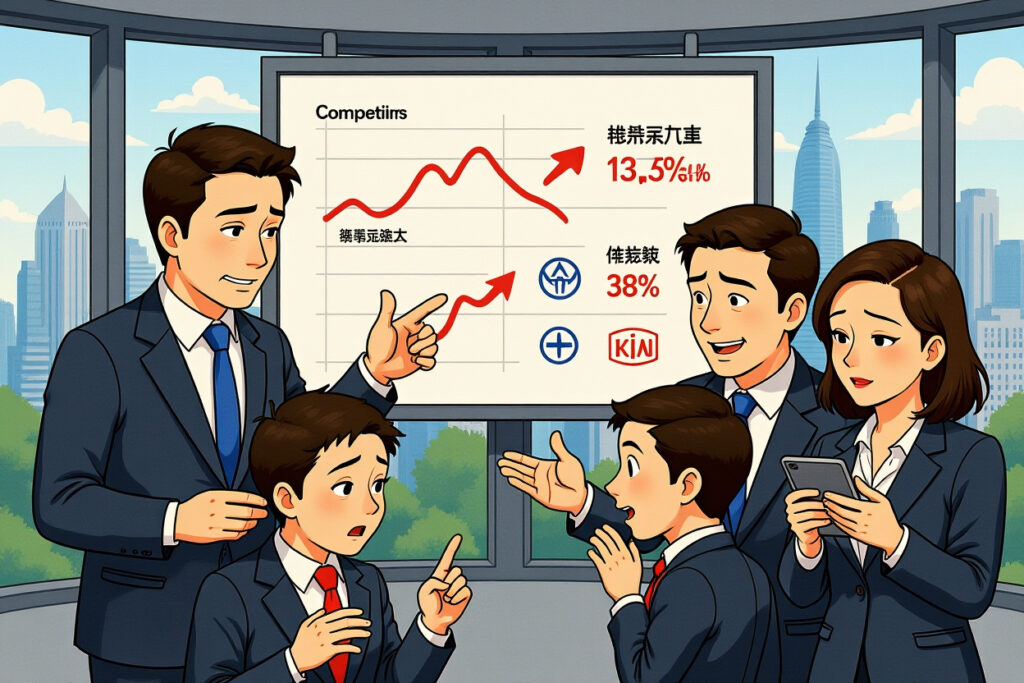China’s A-share market started the trading session on a weak note, with the three major indices collectively opening lower. The ChiNext Index, in particular, saw a decline of over 1%, reflecting broader concerns among investors. This movement highlights ongoing volatility and the impact of both domestic and international economic signals on China’s equity markets. Understanding these trends is crucial for navigating investment opportunities and risks in one of the world’s largest stock markets.
Key Points:
– The Shanghai Composite, Shenzhen Component, and ChiNext indices all opened lower.
– The ChiNext Index dropped more than 1%, underperforming the other benchmarks.
– Market sentiment was influenced by regulatory updates and global economic conditions.
– Sector-specific performances showed notable divergences, with tech and growth stocks facing pressure.
– Analysts are monitoring policy responses and macroeconomic data for future direction.
Market Performance at Opening Bell
The trading day began with a broad-based decline across China’s major stock indices. The Shanghai Composite Index opened down by 0.5%, while the Shenzhen Component Index saw a 0.7% drop. Most notably, the ChiNext Index, which tracks many of China’s innovative and high-growth companies, fell by over 1% in early trading. This collective low opening signals cautious investor sentiment, potentially driven by recent economic data and policy announcements.
Factors Influencing the Early Slide
Several factors contributed to the weak start. Domestically, investors are assessing the latest regulatory guidance from bodies like the China Securities Regulatory Commission (CSRC). Internationally, concerns about global inflation and interest rate trends have added pressure. Additionally, corporate earnings reports from major listed companies have shown mixed results, leading to uncertainty.
Sector Analysis and Key Movers
Not all sectors performed equally. Technology and healthcare stocks, which are heavily weighted on the ChiNext, were among the biggest decliners. In contrast, traditional industries such as banking and commodities showed relative resilience. For example, shares of major state-owned banks opened flat or slightly positive, cushioning some of the broader market losses.
Impact on Growth Stocks
Growth-oriented companies, particularly in tech and green energy, faced significant selling pressure. This trend aligns with global patterns where high-valuation stocks are sensitive to interest rate expectations. Companies like Contemporary Amperex Technology Co. Limited (CATL), a key ChiNext component, saw early declines, reflecting sector-wide nerves.
Regulatory and Economic Context
Recent regulatory updates have played a crucial role in shaping market dynamics. Policies aimed at stabilizing markets and promoting long-term sustainability are being closely watched. For instance, efforts to curb speculation in certain sectors have led to increased volatility. At the same time, macroeconomic indicators, such as PMI data and consumer spending reports, provide a mixed but cautiously optimistic backdrop.
Global Economic Interconnections
China’s markets do not operate in isolation. Developments in major economies, including the U.S. and EU, influence investor behavior. Trade data, currency fluctuations, and commodity prices all contribute to the opening trends observed in A-shares. For more on global market interconnections, refer to financial analyses from sources like the International Monetary Fund (IMF).
Investor Sentiment and Behavioral Trends
Sentiment indicators revealed a risk-off attitude among both institutional and retail investors. The average trading volume in the first hour was lower than recent sessions, suggesting hesitation. Historical data shows that such openings often lead to volatile intraday trading, with opportunities for rebound or further decline depending on news flow.
Retail vs. Institutional Reactions
Retail investors, who are active in the ChiNext market, were quick to reduce exposure to high-beta stocks. Institutional players, meanwhile, used the dip to accumulate positions in undervalued sectors. This divergence highlights the different strategies employed based on investment horizons and risk tolerance.
Technical Outlook and Short-Term Predictions
From a technical perspective, key support levels for the ChiNext Index were tested during the early session. Analysts are watching moving averages and trading ranges to gauge potential rebound points. Short-term predictions suggest continued volatility, with a chance for recovery if supportive policies or positive economic data emerge.
Expert Opinions and Projections
Financial experts from firms like China International Capital Corporation Limited (CICC) emphasize the importance of monitoring policy signals from upcoming government meetings. Projections for the rest of the week hinge on factors like liquidity injections and international market performance.
Strategic Takeaways for Market Participants
For investors, days with collective low openings require a balanced approach. Diversification across sectors and attention to policy announcements can mitigate risks. Long-term investors might view such dips as entry points, while traders should prepare for intraday volatility. Keeping an eye on leading indicators and global trends will be essential for making informed decisions.
Remember, market fluctuations are inherent to investing. Staying informed through reliable sources and maintaining a disciplined strategy can help navigate periods of uncertainty. Consider consulting with a financial advisor to align these insights with your personal investment goals.




